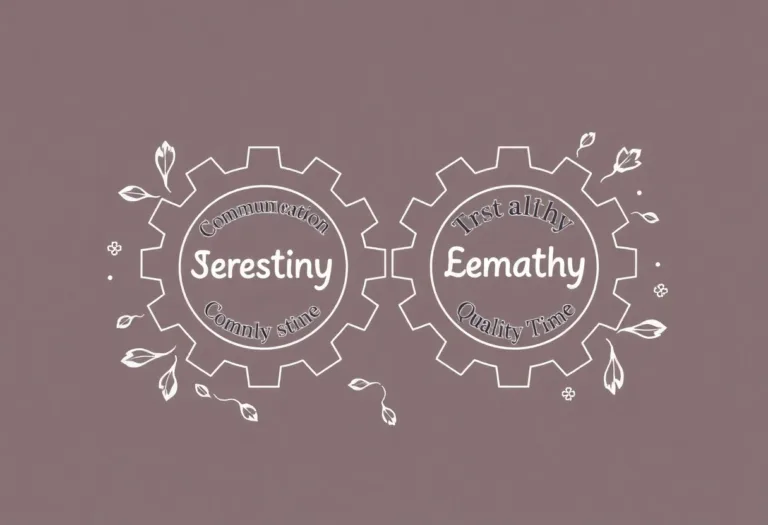Love Languages: 6 Secrets to Meaningful Affection and Connection
Love is a universal language, but did you know that everyone has their own style of giving and receiving it? Love languages are the means by which we express and comprehend affection. Understanding and communicating your partner’s love language has the potential to improve your relationship, encouraging a deeper connection and a better sense of fulfilment. In this informative post, we will investigate the notion of love languages, identify the five basic love languages, and learn how to utilise this information to improve the way we express love.
1. The First of the Five Love Languages
a) Verbal praises, appreciation, and encouragement: Some people feel most loved when they receive verbal praises, gratitude, and encouraging words. Affection expressed through kind and supportive words can significantly impact their emotional well-being.
b) Quality Time: Uninterrupted attention and shared experiences are the finest gestures of love for others. Spending quality time together, having meaningful conversations, and participating in activities fosters connection and strengthens bonds.
c) Acts of Service: Some people feel loved when their partner goes above and beyond to assist and support them. Caring and affection are demonstrated through cooking meals, running errands, or assisting with chores.
d) Physical Touch: For some people, physical touch, such as holding hands, hugging, or cuddling, is a powerful love language. Physical contact conveys affection, warmth, and a strong emotional bond.
e) Receiving presents: Gifts might have a special value for someone whose love language is receiving presents. Thoughtful and meaningful gifts represent love, care, and consideration.
2. Recognising Your Love Language
Take some time to think about how you convey love naturally and what makes you feel appreciated. Pay attention to how you convey affection to others and what connects most strongly with you. This self-awareness will assist you in determining your major love language.
3. Recognise Your Partner’s Love Language
Similarly, to grasp your partner’s love language, observe and speak with them. Take note of how they express their devotion and what they appreciate most about receiving love. Open dialogue regarding love languages might help you better understand each other’s needs and preferences.
4. Communicating in the Love Languages
Make a concerted effort to speak your partner’s love language fluently once you’ve found it. Communicate your love meaningfully, matching your actions and words to their primary love language. This deliberate effort indicates your concern for their emotional well-being and enhances your bond.
5. Love Language Balancing
While it is critical to prioritise your partner’s primary love language, it is also important to remember that a good relationship requires balance. For both partners to feel loved and respected, incorporate aspects of the other love languages. Flexibility and adaptation are essential for navigating the complexities of love languages.
6. Ongoing Learning and Development
Love languages can change due to life events, personal growth, and relationship dynamics. Monitor your partner’s shifting requirements and adjust your love expressions accordingly. Continuously learn and grow together, enhancing your comprehension of each other and expanding your repertoire of love languages.
In subsequent posts, we will explore each love language in more detail, provide practical ways to incorporate them into your relationship, and offer inspiring anecdotes about how love languages have changed people’s lives. Keep an eye out for additional useful information on the relationship information platform.
Love languages can transform communication with our partners by promoting greater understanding, empathy, and affection. By accepting the concept of love languages, we open ourselves up to a world of meaningful and intentional gestures of love.
Remember that knowing your partner’s love language isn’t enough; you must also implement that information. Speaking your partner’s love language consistently and genuinely will have a beneficial ripple effect in your relationship, strengthening the emotional tie and generating a sense of security and fulfilment.
Be patient with yourself and your spouse as you discover and express love languages. It takes time and practice to understand and apply these principles thoroughly. Celebrate the minor triumphs along the way as you embrace learning and growing together.
Including love languages in your relationship can strengthen your bond and improve communication, conflict resolution, and overall happiness. The more your emotional intimacy grows, the more you comprehend and speak each other’s love languages.
Explore your unique love language and engage in open and honest dialogue with your spouse today to take the first step. Celebrate the unique ways you both give and receive love by embracing the beauty of individuality and diversity within your partnership.
Let us work together to build a world where love is spoken, understood, and treasured. Keep an eye out for more enlightening content on Relationship Insights, where we will go deeper into each love language and provide practical methods for incorporating them into your daily life.
Remember that learning your love language is a lifelong adventure of discovery, connection, and love. May you embark on this road with an open heart, a willingness to learn, and a dedication to cultivating a relationship full of love, understanding, and genuine affection.
With best wishes,







